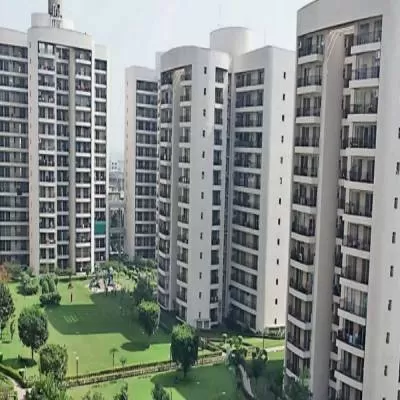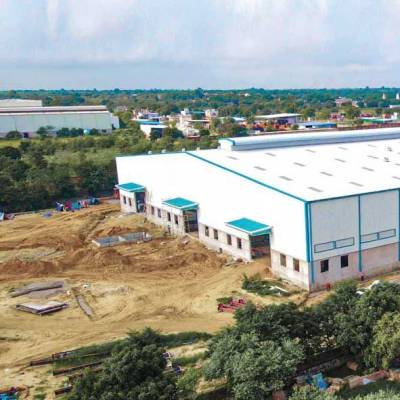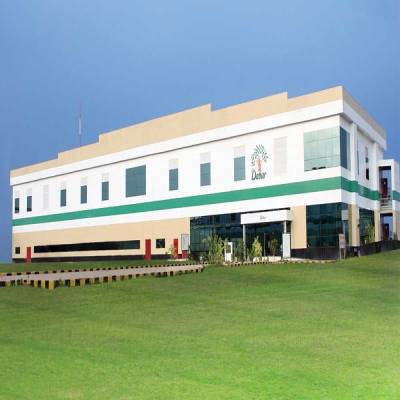- Home
- Real Estate
- The PEB Wave
The PEB Wave
The Indian construction industry, which consists of infrastructure, housing and real estate as well as industrial segments, has grown by leaps and bounds for the past decade-and-a-half and accounts for over 9 per cent of the country´s GDP. Quality of construction has also improved significantly over the past decade owing to increase in exposure to global construction technologies and best practices. Project durations have become shorter and there is a special focus on safety standards. There has been a shift from in-situ construction to factory-controlled pre-engineered high quality construction, which has changed the requirement of engineering, material and skills required for the construction industry. Kirby recognised this trend early and introduced the concept of pre-engineered steel buildings (PEBs). In PEBs, customer requirements are custom-engineered and high-quality material is delivered to site in ready-to-erect condition where semi-skilled people assemble these components using cranes for faster construction.
PEB and India
The PEB concept gained impetus in the Indian markets in early 2000 and the use of steel, especially PEB, went on to grow rapidly in the construction industry. In 2000, when Kirby started its operations in India, the PEB concept was not well known here. The concept gained acceptance because of its promotion by Kirby on a large-scale basis and owing to the opening of the economy with a number of multinationals setting up their facilities and preferring metal buildings over conventional methods. Changes in government regulations, industry-friendly policies and the promotion of India as a preferred FDI destination also resulted in heavy FDI inflows, thereby giving a further boost to PEB technology.
Over the past seven years, many players have entered the PEB market. With more players in the scene, we will have more PEB buildings around, thereby increasing visibility and demand for these buildings in the market. In the current scenario, anyone planning to put up a factory or warehouse immediately thinks of a PEB!
Potential, perceptions and realities
Evidently, the PEB industry is yet to realise its full potential. Possible applications include factories, warehouses, workshops, showrooms, petrol stations, site offices, supermarkets, aircraft hangars, cold storages, metro stations, shipyards, sport stadiums and offices.
As all these buildings are unique in nature with different steel sections and customised as per requirement, it is not possible to provide a blanket per-square-feet construction cost of any PEB. As the total cost involved is of steel, it can only be calculated after the initial design is completed, based on the estimated output of the building weight.
That said, the perception of PEB being very expensive is a mere notion. Consider the fact that the industry has grown by over 15-20 per cent during the first decade of this century and is growing at a slower rate for the past five years or so only owing to global economic factors. This growth is in itself proof that these structures are not very expensive, but only slightly costlier than concrete structures. In fact, in some cases where the area is very high, PEBs are found to be less expensive than RCC buildings. Also, with companies looking for faster project completion for faster returns on their investments, PEB is the only one-stop solution to fulfil their requirements.
Green building
What´s more, PEB technology is one of the first choices when it comes to sustainable and green buildings. Kirby India is at the forefront of this innovation and is leading the revolution of green construction in the country through its PEB technology. Steel is the preferred material for all prefab structures and PEBs use steel that is more than 80 per cent recyclable. These buildings are cost-effective, energy-efficient and provide a better quality environment as they are cooler in hot conditions owing to the favourable roofing material and natural ventilation. The use of skylights and solar panels on rooftops meets daylight and captive power requirements and, at the same time, reduces emissions and gains carbon credits under the clean development mechanism. Effective usage of insulation material, louvers and other materials also helps make PEB one of the most preferred green options.
The challenges
Like many other precision industries in India, the PEB industry also faces many challenges. One of them is the moderate level of acceptance among Indian corporate compared to developed economies. However, in the past decade, there has been increased acceptance of PEB owing to rapidly expanding industrialisation. The changing market environment has led to a shift towards more advanced technologies - one of them being PEB - owing to increasing demand from customers for faster project completion.
Other challenges faced by the PEB industry include price volatility of raw material, mainly steel, and availability of skilled manpower. The economic conditions before the second-half of 2014 changed the dynamics of the industry, with new investments or capex announcements dropping drastically because of a demand slump in the domestics market, weak exports, low business and consumer confidence, rising current account deficit, a weakening rupee and many other internal and external factors.
The way ahead
The construction industry accounts for over 66 per cent of total steel consumption and in advanced countries, more than two-thirds of all buildings are made of steel. The Indian Government should promote steel as a construction material for speedy implementation of projects to avoid cost overruns and project delays. Our government is planning to build 100 smart cities and this can be efficiently done using pre-engineered steel construction as done in developed countries providing an affordable and sustainable material for construction. Concessions in the form of tax incentives could also be extended for the steel construction industry.
The industry is moving from pre-engineered buildings such as warehouses and offices to highly complex pre-engineered sections in infrastructure such as power plants, steel plants, ports, oil and gas utilities and so on, which require specialised design skill sets. With adequate attention from the government, this industry can dramatically reduce construction time for the industrial and infrastructure sectors. Pre-engineered construction impacts speed, quality and pricing of industrial construction, and has green benefits and a high resale value.
It´s not surprising then, that India is poised for a big PEB wave, given our renewed focus on infrastructure and the new industrial thrust. The Central Government´s Make in India campaign and the recent approval of the ordinance for the amendment of the Land Acquisition Act for development of infrastructure and industry-related projects will further give a boost to economic growth as this was a major hurdle in the delay of implementation of many projects. These reforms and many other such initiatives in the coming future, as promised by the government, are expected to make the Indian construction and infrastructure segments much stronger and increase their percentage share in overall GDP contribution, thus rendering a positive growth momentum to the PEB industry over the next decade or so.
About the author:
D Raju, Managing Director, Kirby Building Systems India Pvt Ltd,a part of Kirby Building Systems, is instrumental in introducing the pre-engineered steel building technology in India. His career with Kirby Building Systems spans nearly 15 years since its inception in India. Raju specialises in different areas such as general management, business leadership, turnaround management, brand equity, techno-commercial negotiations, engineering design, new product development and project management, etc.
Pre-engineered building technology is the ideal option for an India on the move, writes D RAJU. The Indian construction industry, which consists of infrastructure, housing and real estate as well as industrial segments, has grown by leaps and bounds for the past decade-and-a-half and accounts for over 9 per cent of the country´s GDP. Quality of construction has also improved significantly over the past decade owing to increase in exposure to global construction technologies and best practices. Project durations have become shorter and there is a special focus on safety standards. There has been a shift from in-situ construction to factory-controlled pre-engineered high quality construction, which has changed the requirement of engineering, material and skills required for the construction industry. Kirby recognised this trend early and introduced the concept of pre-engineered steel buildings (PEBs). In PEBs, customer requirements are custom-engineered and high-quality material is delivered to site in ready-to-erect condition where semi-skilled people assemble these components using cranes for faster construction. PEB and India The PEB concept gained impetus in the Indian markets in early 2000 and the use of steel, especially PEB, went on to grow rapidly in the construction industry. In 2000, when Kirby started its operations in India, the PEB concept was not well known here. The concept gained acceptance because of its promotion by Kirby on a large-scale basis and owing to the opening of the economy with a number of multinationals setting up their facilities and preferring metal buildings over conventional methods. Changes in government regulations, industry-friendly policies and the promotion of India as a preferred FDI destination also resulted in heavy FDI inflows, thereby giving a further boost to PEB technology. Over the past seven years, many players have entered the PEB market. With more players in the scene, we will have more PEB buildings around, thereby increasing visibility and demand for these buildings in the market. In the current scenario, anyone planning to put up a factory or warehouse immediately thinks of a PEB! Potential, perceptions and realities Evidently, the PEB industry is yet to realise its full potential. Possible applications include factories, warehouses, workshops, showrooms, petrol stations, site offices, supermarkets, aircraft hangars, cold storages, metro stations, shipyards, sport stadiums and offices. As all these buildings are unique in nature with different steel sections and customised as per requirement, it is not possible to provide a blanket per-square-feet construction cost of any PEB. As the total cost involved is of steel, it can only be calculated after the initial design is completed, based on the estimated output of the building weight. That said, the perception of PEB being very expensive is a mere notion. Consider the fact that the industry has grown by over 15-20 per cent during the first decade of this century and is growing at a slower rate for the past five years or so only owing to global economic factors. This growth is in itself proof that these structures are not very expensive, but only slightly costlier than concrete structures. In fact, in some cases where the area is very high, PEBs are found to be less expensive than RCC buildings. Also, with companies looking for faster project completion for faster returns on their investments, PEB is the only one-stop solution to fulfil their requirements. Green building What´s more, PEB technology is one of the first choices when it comes to sustainable and green buildings. Kirby India is at the forefront of this innovation and is leading the revolution of green construction in the country through its PEB technology. Steel is the preferred material for all prefab structures and PEBs use steel that is more than 80 per cent recyclable. These buildings are cost-effective, energy-efficient and provide a better quality environment as they are cooler in hot conditions owing to the favourable roofing material and natural ventilation. The use of skylights and solar panels on rooftops meets daylight and captive power requirements and, at the same time, reduces emissions and gains carbon credits under the clean development mechanism. Effective usage of insulation material, louvers and other materials also helps make PEB one of the most preferred green options. The challenges Like many other precision industries in India, the PEB industry also faces many challenges. One of them is the moderate level of acceptance among Indian corporate compared to developed economies. However, in the past decade, there has been increased acceptance of PEB owing to rapidly expanding industrialisation. The changing market environment has led to a shift towards more advanced technologies - one of them being PEB - owing to increasing demand from customers for faster project completion. Other challenges faced by the PEB industry include price volatility of raw material, mainly steel, and availability of skilled manpower. The economic conditions before the second-half of 2014 changed the dynamics of the industry, with new investments or capex announcements dropping drastically because of a demand slump in the domestics market, weak exports, low business and consumer confidence, rising current account deficit, a weakening rupee and many other internal and external factors. The way ahead The construction industry accounts for over 66 per cent of total steel consumption and in advanced countries, more than two-thirds of all buildings are made of steel. The Indian Government should promote steel as a construction material for speedy implementation of projects to avoid cost overruns and project delays. Our government is planning to build 100 smart cities and this can be efficiently done using pre-engineered steel construction as done in developed countries providing an affordable and sustainable material for construction. Concessions in the form of tax incentives could also be extended for the steel construction industry. The industry is moving from pre-engineered buildings such as warehouses and offices to highly complex pre-engineered sections in infrastructure such as power plants, steel plants, ports, oil and gas utilities and so on, which require specialised design skill sets. With adequate attention from the government, this industry can dramatically reduce construction time for the industrial and infrastructure sectors. Pre-engineered construction impacts speed, quality and pricing of industrial construction, and has green benefits and a high resale value. It´s not surprising then, that India is poised for a big PEB wave, given our renewed focus on infrastructure and the new industrial thrust. The Central Government´s Make in India campaign and the recent approval of the ordinance for the amendment of the Land Acquisition Act for development of infrastructure and industry-related projects will further give a boost to economic growth as this was a major hurdle in the delay of implementation of many projects. These reforms and many other such initiatives in the coming future, as promised by the government, are expected to make the Indian construction and infrastructure segments much stronger and increase their percentage share in overall GDP contribution, thus rendering a positive growth momentum to the PEB industry over the next decade or so. About the author: D Raju, Managing Director, Kirby Building Systems India Pvt Ltd,a part of Kirby Building Systems, is instrumental in introducing the pre-engineered steel building technology in India. His career with Kirby Building Systems spans nearly 15 years since its inception in India. Raju specialises in different areas such as general management, business leadership, turnaround management, brand equity, techno-commercial negotiations, engineering design, new product development and project management, etc.






















